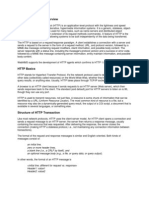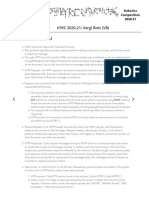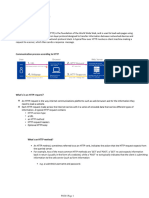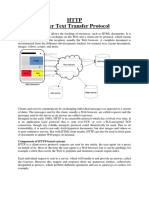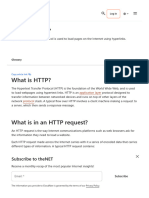0% found this document useful (0 votes)
8 views3 pagesHTTPRequest Response
HTTP, or Hypertext Transfer Protocol, is the foundation for communication between a client and a server, where the client sends requests for resources. An HTTP request consists of a request line, request headers, and an optional body, while the server responds with a status line, response headers, and a response body containing the requested resource or error information. This protocol facilitates the exchange of data over the web by defining how requests and responses should be structured and processed.
Uploaded by
bijeshsharma2016Copyright
© © All Rights Reserved
We take content rights seriously. If you suspect this is your content, claim it here.
Available Formats
Download as DOCX, PDF, TXT or read online on Scribd
0% found this document useful (0 votes)
8 views3 pagesHTTPRequest Response
HTTP, or Hypertext Transfer Protocol, is the foundation for communication between a client and a server, where the client sends requests for resources. An HTTP request consists of a request line, request headers, and an optional body, while the server responds with a status line, response headers, and a response body containing the requested resource or error information. This protocol facilitates the exchange of data over the web by defining how requests and responses should be structured and processed.
Uploaded by
bijeshsharma2016Copyright
© © All Rights Reserved
We take content rights seriously. If you suspect this is your content, claim it here.
Available Formats
Download as DOCX, PDF, TXT or read online on Scribd
/ 3






